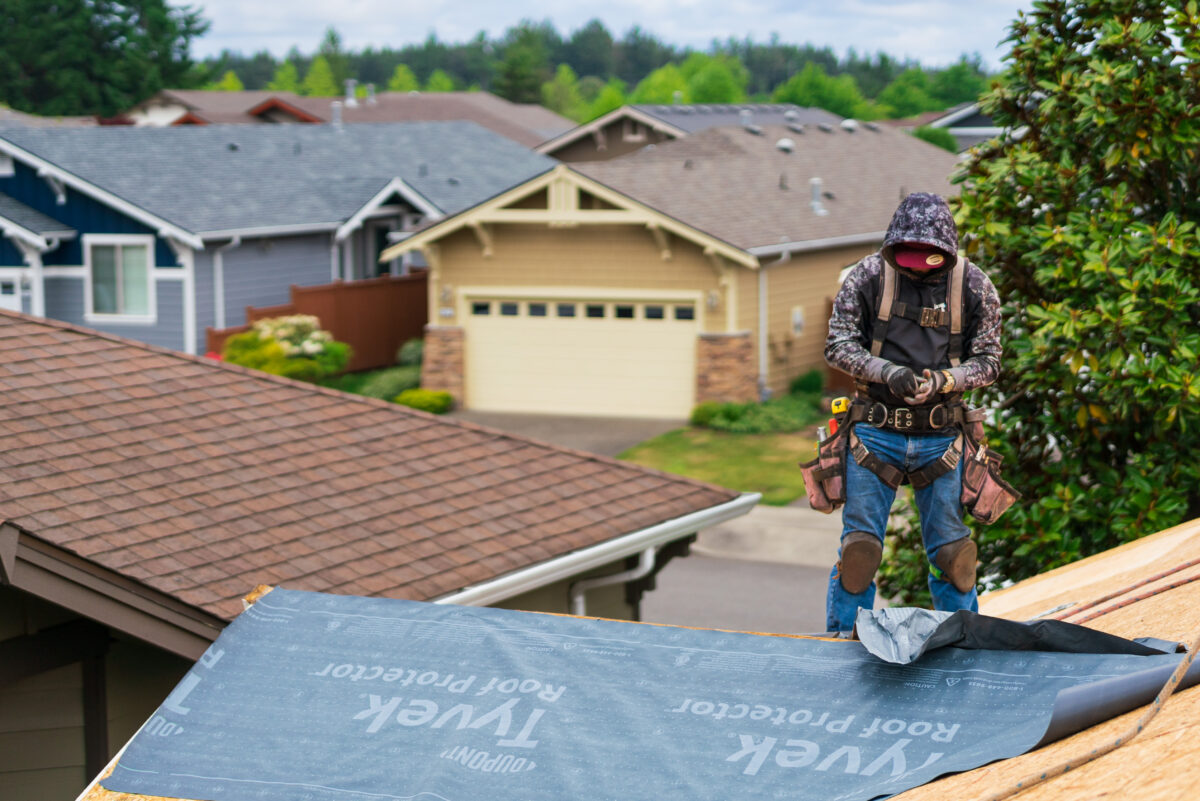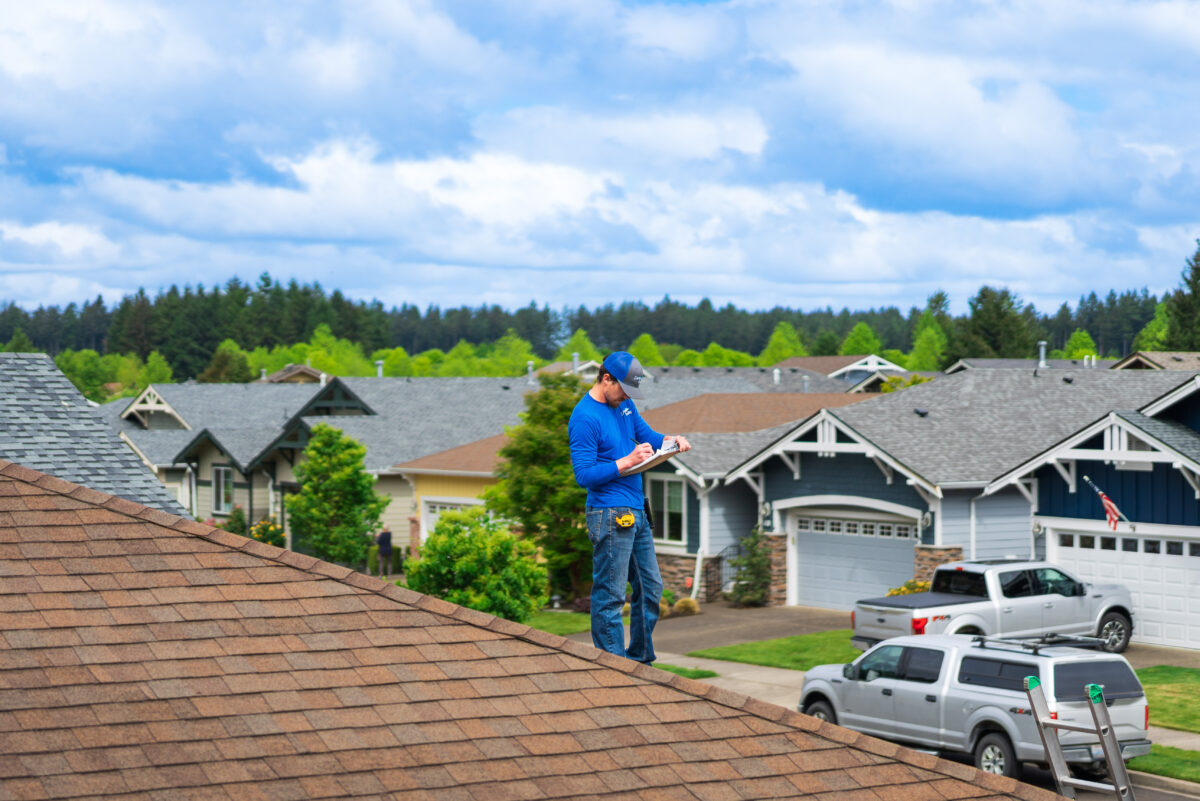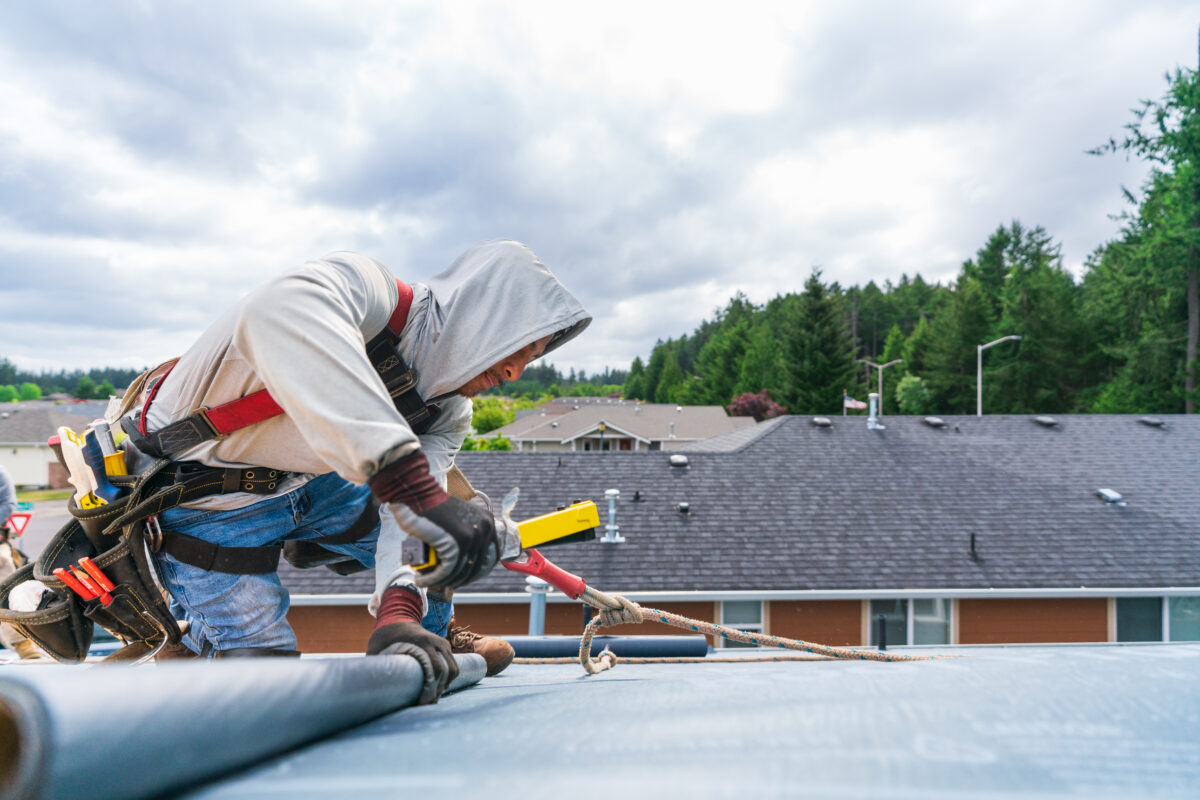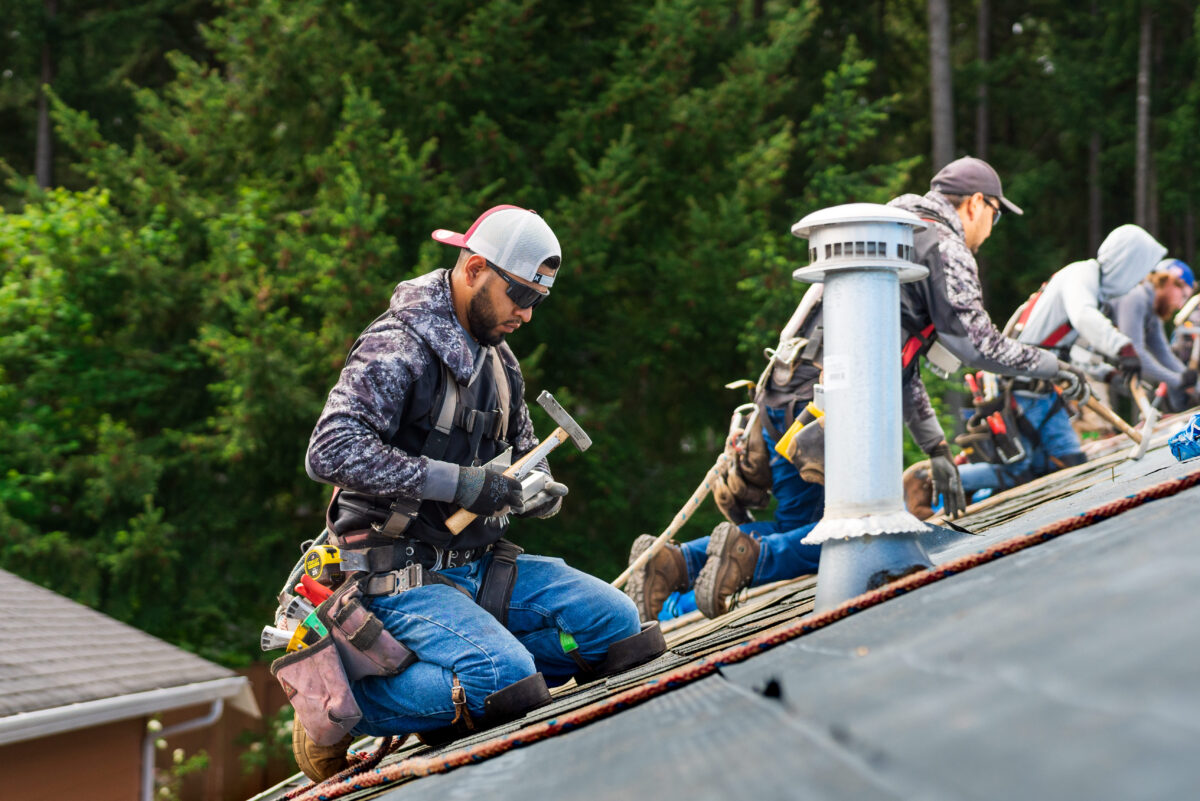What to Expect During a Professional Roof Installation
So you’ve decided it’s time for a new roof. Maybe you need a replacement for the roof that leaks like it thinks you need a shower, or maybe you’re starting fresh with a new home. Whatever the case, you’re probably wondering what to expect from your incoming installation. Do you need to physically be there for the process? How do you prepare? Will it take long? These are all excellent questions, and in this guide, we’ll break down everything you need to know about your professional roof installation so that you can move forward with confidence.
Before the First Shingle Comes Off
In Western Washington, timing is everything. Our dry months, from late spring through early fall, generally provide the best conditions for a roof replacement. However, an experienced crew can complete a proper installation year-round by working carefully around the weather forecast.
Inspection
A professional installation always begins with a thorough inspection. The crew will evaluate the current roof from the outside and, if needed, from inside the attic. They’ll look for signs of water damage, rotted wood, and ventilation problems that could affect the new roof’s performance. If it’s new construction you’re planning on, the crew will look at structural components like ventilation and framing rather than damage. Based on the findings, you will receive a detailed estimate and a clear explanation of the roofing system best suited for your home.
Permits and Code Compliance
There’s also the matter of permits and code compliance. This part is handled entirely by the roofing company, so you can focus on the bigger picture. In Western Washington, regulations require that all new roof installations meet specific safety and energy-efficiency standards.
Choosing the Materials
The last step before installation is the most fun one. Before the crew can get started on the project, you’ll have to choose a material. Many homeowners choose asphalt shingles because they’re versatile and budget-friendly, but some others prefer the sleek look and long-term durability of metal roofing. Some opt for composite materials designed to withstand heavy rain and resist moss growth. The right choice depends on your home’s architecture, your budget, and how much maintenance you’re willing to do in the years ahead.
Preparing Your Home
Before installation begins, it’s important to get the work area ready. For replacements, this might mean moving vehicles away from the driveway, storing patio furniture, and clearing yard space so crews have safe and easy access to the roof. For new builds, preparation focuses on ensuring the site is clear and the structure is ready for crews to work.
We take extra care to protect landscaping, siding, and other exterior features with tarps and protective coverings. Inside, if attic access is needed, we make it quick and minimally disruptive. If you have pets or children, it’s best to plan for them to be inside and away from the work zone, as roofing work is noisy and active.
Preparation Checklist:
Two Weeks Before
- Confirm your installation date with the roofing company.
- Review your material, colors, and any special requests.
- Notify neighbors about the project dates so they can plan for potential noise and activity.
One Week Before
- Arrange for pets and children to be safely indoors or away from the work area during installation days.
- Plan alternative work or childcare arrangements if noise will be an issue.
- Move cars, trailers, and other large items away from the driveway and garage area.
Day Before
- Remove or secure patio furniture, potted plants, grills, and decorative items near the home.
- Mow the lawn to make cleanup easier after the project is finished.
- Cover fragile landscaping or garden features.
Day of
- Keep driveways and walkways clear for trucks, dumpsters, and material delivery.
- Keep blinds and curtains closed against dust from open roofing areas.
After Installation
- Walk the property with the crew leader to review the completed work.
- Ask about warranty paperwork and maintenance tips.
- Store all documents, receipts, and warranty information in a safe place.
The Tear-Off or Deck Preparation Stage
For roof replacements, the process starts with removing the old roofing materials. Crews strip the roof down to the decking, taking care to contain debris and work efficiently. This is when any hidden damage, like rotted wood, sagging areas, or signs of water infiltration, is revealed. If repairs are needed, they’re completed before the installation continues.
For new construction roofing, this stage looks different. Instead of removing old materials, crews start with the bare sheathing, inspecting it for proper fastening, alignment, and any adjustments needed before adding underlayment.
In both cases, the goal is the same: to ensure the base of the roof is solid, clean, and ready for the next phase.
The Actual Installation Process
Laying the Underlayment and Weather Barriers
The first layer is a waterproof underlayment that shields the decking from moisture. In our rainy climate, ice and water shields are especially valuable for leak-prone areas like valleys, eaves, and roof edges. Starter strips and drip edges follow, helping guide water away from vulnerable areas.
Installing Flashing and Ventilation
Next comes the installation of flashing and ventilation systems. Flashing seals the edges around chimneys, skylights, and walls where water could otherwise seep in. Ventilation, whether ridge vents, soffit vents, or mechanical systems, helps regulate attic temperature and humidity.
Placing the Roofing Material
Once the foundation is set, the next step is to place the roofing material you’ve chosen from the lower edge of the roof upward. Each section is precisely secured and aligned so that they’re properly overlapping, fastened securely, and sealed. For asphalt shingles, nails are placed exactly where the manufacturer specifies to maintain warranty coverage.
Final Details
The final touches include capping the ridges, sealing valleys, and double-checking every seam and joint for watertight performance. This is the detail work that gives your roof both its durability and finished appearance.
Timeline and Day-to-Day Impact
Most roofing projects, whether new or replacement, can be finished in one to two days. Larger or more complex designs may take longer, especially if weather conditions require extra caution.
Can You Be Home During the Project?
You can remain home during the installation, but be prepared for noise, vibrations, and general activity around your property. Some homeowners choose to step out during the busiest periods, especially if working from home or caring for small children.
What About Weather Delays?
Having to pause for weather is always a possibility in our region. If conditions shift unexpectedly, our crews secure the roof with protective coverings before breaking from work, ensuring no damage occurs while we wait for better weather.
After the Roof Is Installed
Once the last piece is in place, the crew conducts one last inspection. Every part of the roof is checked to confirm it meets both manufacturer guidelines and industry standards.
Cleanup is a priority. All debris is removed from the site, nails might be collected with magnetic sweepers, and protective coverings are taken down. The result is a clean, safe space around your home.
We then walk through the completed project with you, answer any remaining questions, and provide warranty information along with care recommendations for your new roof.
Protecting Your New Roof
Whether it’s a brand-new roof or a replacement, the key to long-term performance is maintenance. Keeping gutters clear helps prevent water from backing up under the shingles. Regularly removing moss and debris keeps the roofing surface in top condition. Checking flashing and vents after major storms can help catch small issues before they become bigger problems.
Choosing a trusted roofing contractor is just as important as choosing the right materials. A well-installed roof will perform better and last longer, giving you more value for your investment.
The Big Picture
A professional roof installation follows a deliberate, step-by-step process designed to deliver a durable, attractive, and weather-resistant roof. From inspection or framing checks, through careful preparation, precise installation, and thorough cleanup, every step is about protecting your home and giving you peace of mind.
Why Trust Lacey Roofing for Your Installation?
At Lacey Roofing, we’ve been serving Western Washington since 1979, installing both new roofing systems and replacements with the same level of care and craftsmanship. As a family-owned, locally operated company, we understand the demands of our climate and the importance of doing the job right the first time.
If you’re planning a new build or considering a roof replacement, we can guide you through the entire process from choosing materials to the final inspection. Contact Lacey Roofing today to schedule a free estimate and start planning a roof installation that will protect your home for decades to come.









